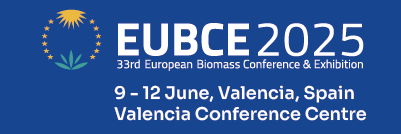Snam, SIAD to collaborate on bio-LNG projects
The aim of the agreement between energy infrastructure operators Snam, and SIAD, a chemical group specialising in the production and supply of industrial gases, is to foster the use of LNG and bio-LNG as alternative fuels for sustainable mobility and other end-uses.
Signed by Marco Alverà, CEO of Snam, and Roberto Sestini, chair of SIAD, the agreement aims to build small and medium-sized plants for the liquefaction of natural gas and biomethane ‘on a global scale’, on behalf of third-party customers.
The plants proposed by the two companies will be modular and standardised, with capacities ranging from 50 kilotonnes per year (ktpa) to 100 ktpa in the case of small-scale plants, and from 200 ktpa upwards for mid-scale plants.
“With this agreement, Snam is entering the liquefaction infrastructure sector, which will be key to enabling sustainable mobility by road, rail, and potentially sea, as well as decarbonising other energy uses,” said Alverà.
“LNG, especially in its ‘bio’ version, makes it possible to reduce both polluting and CO2 emissions, making a decisive contribution to air quality and the fight against climate change, and to boosting the circular economy, optimising the management of the waste cycle and agricultural and food waste.
“Thanks to this collaboration with SIAD, we will make an innovative energy transition solution available to both Italy and other countries.”
The facilities designed by Snam and SIAD will use Italian technology based on an energy-optimised cryogenic nitrogen cycle through the use of two machines (expanders/compressors). These plants allow methane to be transformed from a gas to a liquid state. The companies noted the solution as ‘price competitive’; the savings compared to a ‘traditional solution’ can be as much as 30% of the cost of the plant.
“This important agreement reached with Snam for the development of methane and biomethane liquefaction plants was also made possible thanks to the expertise and technical experience of the SIAD Group,” commented Sestini.
“More than 500 plants have been built and installed in different parts of the world for the production of oxygen, nitrogen, and argon, which all require the liquefaction of air. Based on this technical knowledge, it has been possible to design different sizes of methane liquefaction plants with efficient energy consumption and cost savings.”
As part of the collaboration, a project will be launched in Campania this year, with a capacity of 50 ktpa, which has already obtained European funding.
The plants, which will be operated by Snam, will also ensure the security of LNG and bio-LNG supply to other regions of southern Italy, shortening the chain between supply and end-users and serving a ‘rapidly growing’ market.
LNG trucks have been on the rise in Italy over the last five years, growing from fewer than 100 units to around 3,000. There are now approximately 90 filling stations.

























